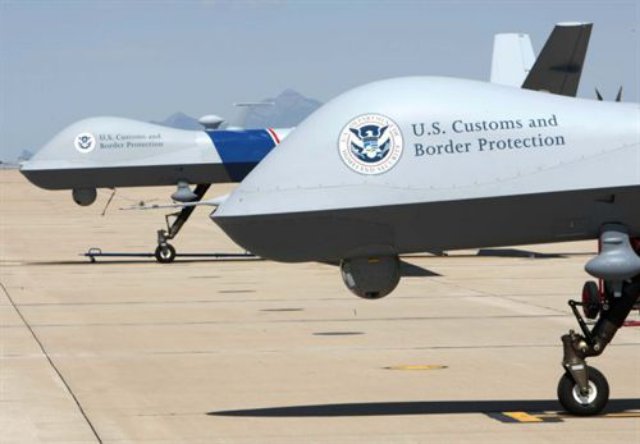Monitoring and policing 7,000 miles of border shared by the United States and its northern and southern neighbours has always been a tall order for Customs and Border Protection and the Border Patrol.
In an era of increasingly scarce funding, CBP officials are finding unmanned aircraft systems a valuable tool for funnelling resources to trouble spots along those lengthy land boundaries.
“It’s a force multiplier is what it is,” said Jim Knoell, Director of Air Operations at National Air Security Operations Center Grand Forks, N.D.
CBP’s unmanned aircraft fleet has come a long way since its only Predator crashed during a nighttime mission in Arizona in 2006. It now operates 10 MQ-9s, most of which are concentrated at bases in Arizona and Texas. They have flown a collective 18,000 hours. Grand Forks is the headquarters of CBP’s unmanned aircraft mission.
It is the training centre for all of the Department of Homeland Security’s unmanned aircraft pilots and sensor operators, said Supervisory Air Interdiction Agent Kevin Kriegh.
CBP operates a total 300 aircraft — the largest law enforcement air force in the world. Grand Forks is also the only operating location for the northern border.
CBP welcomed an expanded fleet of unmanned aircraft authorized by Congress in recent years, but also needs to focus on the infrastructure to keep those Predators aloft and operational, Knoell said.
The agency was authorized to have 24 Predators as late as 2012, but budget concerns have capped the fleet at 10.
Knoell said the CBP has enough aircraft, but needs upgraded sensors. At the core, UAS are simply machines to carry sensors aloft, he said.
“What we would really like is more upgraded sensor packages to put on the birds. At this day and time, 10 is very efficient for us,” he added.
Using a collection of sophisticated sensors, the aircraft can detect border crossings and provide video and radar data from as high as 29,000 feet. Using multispectral cameras, LIDAR (light detection and ranging) and synthetic aperture radar sensors, a Predator can provide “change-detection” data to Border Patrol agents. The aircraft flies over and surveys a predetermined area, then flies over the same area later.
Software helps detect the differences in the images provided. The method can be used to spot tire tracks or footprints crossing the U.S. border that are invisible to the naked eye.
It allows “us to see if there is anything at all going on in that area,” Knoell said. “If there is, we can focus resources to that location. It’s a great tool for monitoring large expanses of border.”
CBP officials have sought to widen their mission by offering other law enforcement and public safety agencies support, Kriegh said. In 2013, they aided the Federal Emergency Management Agency in monitoring the seasonal flooding of the Red River, which runs through Grand Forks. As an enabler of information gathering, the Predators assist firefighting efforts and the management of sporting events like the Super Bowl, Kriegh said.
“Obviously we operate an unmanned aircraft, but more importantly we share information through networks,” he said. “We are border security law enforcement support — that’s our job.”
Source: National Defense Magazine


It would be slightly more journalistic to have a picture of an actual CBP predator rather than the Hermes 450.
Definitely !
Corrected – thanks !
CBP operates the much more capable Reaper (MQ-9), not the Predator (MQ-1).
CBP has followed the military template used in Iraq and Afghanistan: first with Predator and now with their manned, multi-role enforcement aircraft, the Super King Air 350ER. Very pricey to acquire and operate, and now they’re crying because money that could have been better spent to acquire more sophisticated sensors on lower-cost platforms has instead been unwisely spent on expensive platforms having inadequate sensors. Not as stupid as DHS squandering $500+ million on the “virtual fence” camera debacle, but in the same league for sure. The IG should rip them a new one!
But after acquiring more capable sensors they will realize they have inadequate resources for analyzing sensor data.